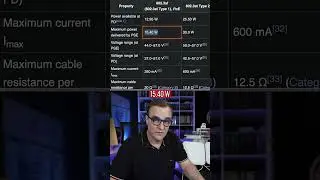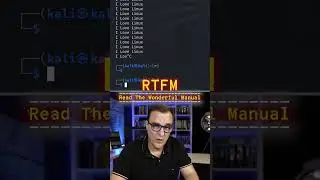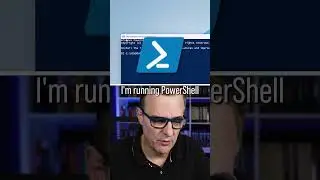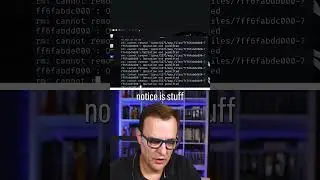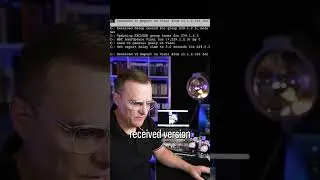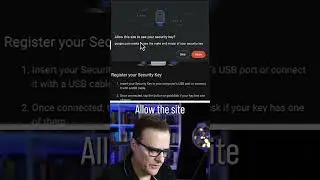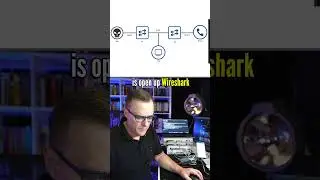Cisco CCNA Packet Tracer Ultimate labs: RIP routing lab: Answers Part 1
Packet Tracer file (PT Version 7.1): https://bit.ly/2wG1I3n
Get the Packet Tracer course for only $10 by clicking here: https://goo.gl/vikgKN
Get my ICND1 and ICND2 courses for $10 here: https://goo.gl/XR1xm9 (you will get ICND2 as a free bonus when you buy the ICND1 course).
For lots more content, visit http://www.davidbombal.com - learn about GNS3, CCNA, Packet Tracer, Python, Ansible and much, much more.
#CCNA #PacketTracer #CCENT
The Routing Information Protocol (RIP) is one of the oldest distance-vector routing protocols which employ the hop count as a routing metric. RIP prevents routing loops by implementing a limit on the number of hops allowed in a path from source to destination. The largest number of hops allowed for RIP is 15, which limits the size of networks that RIP can support.
RIP implements the split horizon, route poisoning and holddown mechanisms to prevent incorrect routing information from being propagated.
In RIPv1 router broadcast updates with their routing table every 30 seconds. In the early deployments, routing tables were small enough that the traffic was not significant. As networks grew in size, however, it became evident there could be a massive traffic burst every 30 seconds, even if the routers had been initialized at random times.
In most networking environments, RIP is not the preferred choice for routing as its time to converge and scalability are poor compared to EIGRP, OSPF, or IS-IS. However, it is easy to configure, because RIP does not require any parameters unlike other protocols.
RIP uses the User Datagram Protocol (UDP) as its transport protocol, and is assigned the reserved port number 520
Based on the Bellman–Ford algorithm and the Ford–Fulkerson algorithm distant-vector routing protocols started to be implemented from 1969 onwards in data networks such as the ARPANET and CYCLADES. The predecessor of RIP was the Gateway Information Protocol (GWINFO) which was developed by Xerox in the mid-1970s to route its experimental network. As part of the Xerox Network Systems (XNS) protocol suite GWINFO transformed into the XNS Routing Information Protocol. This XNS RIP in turn became the basis for early routing protocols, such as Novell's IPX RIP, AppleTalk's Routing Table Maintenance Protocol (RTMP), and the IP RIP. The 1982 Berkley Software Distribution of the UNIX operating system implemented RIP in the routed daemon. The 4.2BSD release proved popular and became the basis for subsequent UNIX versions, which implemented RIP in the routed or gated daemon. Ultimately RIP had been extensively deployed before the standard written by Charles Hedrick was passed as RIPv1 in 1988.
Transcription:
So in this lab, we need to configure Routing Information Protocol or RIP version 2 to enable connectivity between devices in the network.
Once again, on PC 1, if I try and ping 172.16.1.2 which is the DNS server, I’m getting request timeout and that’s because router 1 doesn’t have that route in its routing table.
So as an example on router 1, if I look at the routing table of that router, Router 1 only has connected and local routes in the routing table. This destination is unreachable. The router doesn’t have a route to this network. So let’s configure RIP on router 1.
show ip interface brief
will show us the IP addresses configured on the router.
We can see that this IP address is configured on gigabit 0/0/0
This IP address is configured on gigabit 0/0/1
Those are class C IP addresses.
So, on the router, router RIP network 192.168.1.0 they are class C networks.
So I’m going to enter them with the first 3 octets specified in the network command. I’m also going to specify that the version RIP used is version 2.
So show ip protocols
on the router shows us that this router now has RIP enabled on this interface as well as this interface, that’s correct per our topology diagram. The version of RIP sent and received is version 2. The router is routing for this networks. But at the moment, it hasn’t learned about any other networks in the topology because we need to enable RIP on router 2.
So on router 2, show ip protocols
no routing protocols are enabled, only routes that are visible are connected in local routes. We can now enable RIP on this network as well as this network.
So router rip
network 192.168.2.0
class C network, 192.168.3.0
version 2
is the RIP version that we’re going to use.
So show ip rip database
at the moment, the router knows about this network and this network. Notice, automatic summarization is enabled here. What you typically want to do in the real world and in most labs, is type no auto-summary and you want to do that on all your RIP routers. We don’t want the routes automatically summarized...
Смотрите видео Cisco CCNA Packet Tracer Ultimate labs: RIP routing lab: Answers Part 1 онлайн, длительностью часов минут секунд в хорошем качестве, которое загружено на канал David Bombal 15 Май 2018. Делитесь ссылкой на видео в социальных сетях, чтобы ваши подписчики и друзья так же посмотрели это видео. Данный видеоклип посмотрели 2,820 раз и оно понравилось 35 посетителям.








